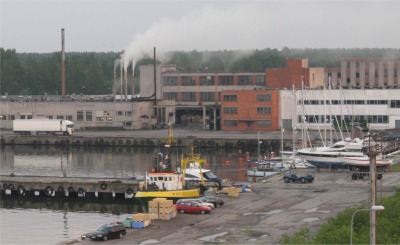 Attractive Ventspils Marina |
This variable direction low speed wind continued for the rest of the day, and to avoid another night of drifting, we switched the motor on and arrived at Ventspils as the sun was setting.
Ventspils was a much industrialised town, a large refinery greeted us on the way to the harbour, and once in, we berthed in a basin just by the fishing basin, a wonderful reek! Worse was to come, within 50m of our basin, a dull, grey concrete building sprouted six low height chimneys, all spewing out huge volumes of a white cloud of dust and smoke. Fish and wood entered at one end of the factory; smoked fish and pollution exited elsewhere. We had been warned about this by the German chap we met at Haapsalu.
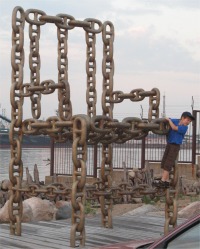 Chain Chair |
We had already eaten en route, so we celebrated arriving at another country with the remains of the fruity cider. With that, Alan decided to call it a day.
I needed to stretch my legs so I wandered out to the end of the south pier to watch a large ship coming in, and also to survey the land, or what I could see of it. I caught the remnants of the setting sun; there were still plenty of people out on the long sandy beach which stretched out south from the pier. Whilst looking out to sea, I felt a warm waft of air from the land brush the back of my neck, and the smell of smoke. I turned around half expecting to see someone lighting a BBQ on this extremity of the pier. To my surprise there wasn't, I was being immersed in the output from the same chimneys next to the marina about half a mile away. Rather than stay out in the pollution, I made my way back. At least it might keep the flies at bay.
9th June
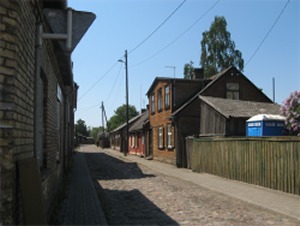 Street in Ostgals District |
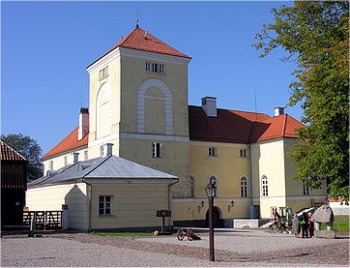 Livonian Order Castle |
An explore of Ventspils was the order of the day, passing through the Ostgals district on the way. Up until the mid 19th century, Ostgals (Harbour End) was an open sand field with wind blown sand dunes. The travelling dunes invaded the harbour making it shallow and impeding operation. After unsuccessful attempts to stop the drifting with foliage, the tsarist Russian government issued a decree in 1836 for all farmers, who would like to settle in the dune area, to render a range of benefits such as: releasing from compulsory work for several years, supplying timber for building and foliage for landscaping from the state forests free of charge, even paying for each building that was constructed. Thus, in a relatively short period of time, Ostgals was formed with its tiny cobbled streets and peculiar constructions.
Following the bank of the river Venta, we came across a sculpture of a cow. We were to find, through the course of the day, several sculptures of cows. Ventspils is one of a number of cities across the globe who have held a cow festival (don't ask why they are held - the first occurred in Zurich in 1995). CowParade in Ventspils took place in 2002.
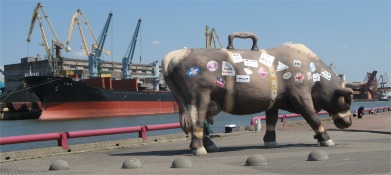 Travelling Cow |
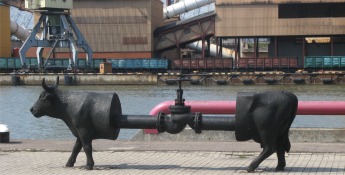 Black Cow |
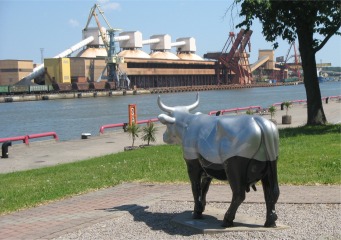 Sea Cow |
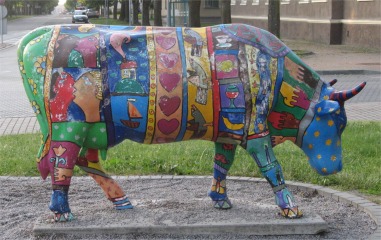 Life is Beautiful Cow |
Departing from the riverside, we walked through a series of streets with a very varied mixture of architectures, ranging form ancient looking almshouses through to modern complexes, bleak Soviet constructions to art nouveau. A large amount of the city had been destroyed during the war, and it seemed as if no cohesive planning had been carried out since then. Eventually we arrived at what could be called a centre for the old town, the market square, full of stalls selling in season farm produce, clothing and art and craft goods.
 Almshouses |
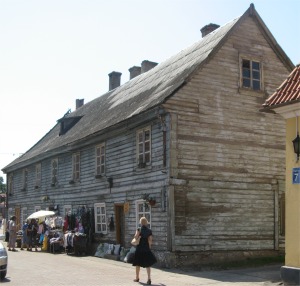 One of the Oldest Wooden Buildings in Latvia |
In a more modern part of the city, we visited the bus station and bought a couple of return tickets to Riga for the following day. By now Alan's knees and hip were giving him some pain, so he caught a cab back to the boat.
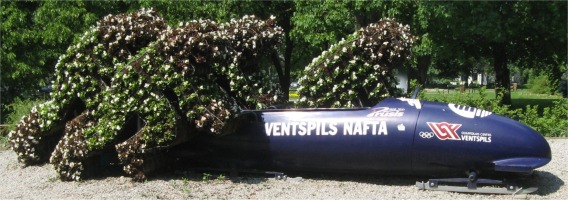 Bobsleigh Team |

|
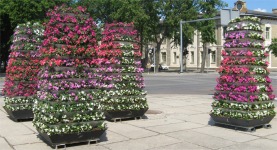
|
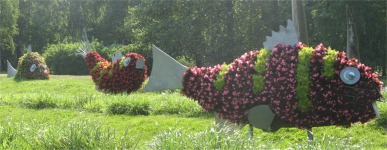
|
| Ventspils Flowers |
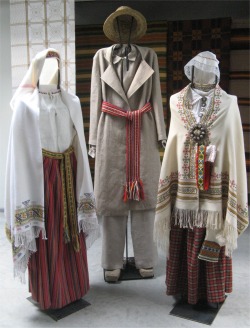 Traditional Latvian Dress |
 Nicolay Lutheran Church |
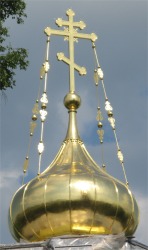 St Nicolay Russian Orthodox Church Spire |
My route back to the waterfront took in the St Nicolay Russian Orthodox Church, the outside being covered in scaffolding and the inside being the usual ornate Orthodox setting, though rather dimly lit in this case. Outside was a contrast of bright sunshine, fairly fitting for the numerous Easter decorations in the churchyard.
It was so hot, so I returned to the boat, taking in a brief view of the busy sandy beach, well equipped with life guards and dozens of swings and play areas for children. It struck me that the city catered well for its young folk, with lots of parks full of facilities for children. Educational and entertaining programmes for children were an integral part of the cultural life of Ventspils. Ventspils families with kids eagerly attended Sunday events in the children's playground "Children's Town" and the children's park "Fantasy". The City Council regularly supplied a number of grants to help fund cultural events and free-time activities for the youth, thus promoting participation and engagement in the city life and increasing diversity of professional art.
